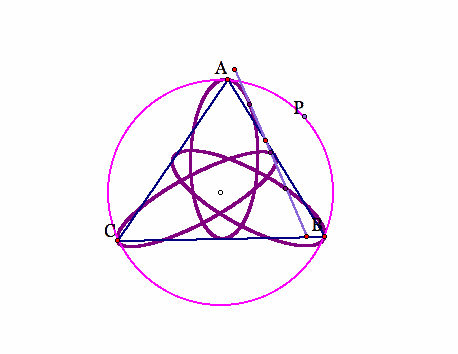
Assignment #9: Pedal Triangles
by
Laura Singletary

Assignment #9: Pedal Triangles
by
Laura Singletary
To begin our exploration, we must construct a pedal triangle. Begin by constructing triangle ABC, then construct the lines that pass through the points A and B, A and C, and B and C. Pick any point P in the given plane, and construct perpeducular lines to line AB, line AC, and line BC through the point P. Construct the intersections of the perpediculars wit the lines forming the triangle ABC. Call these intersections E, F, and G. Construct the segments EF, FG, GE, thus forming triangle EFG - the pedal triangle with the pedal point at P. Explore ideas with the pedal triangle using this GSP file.
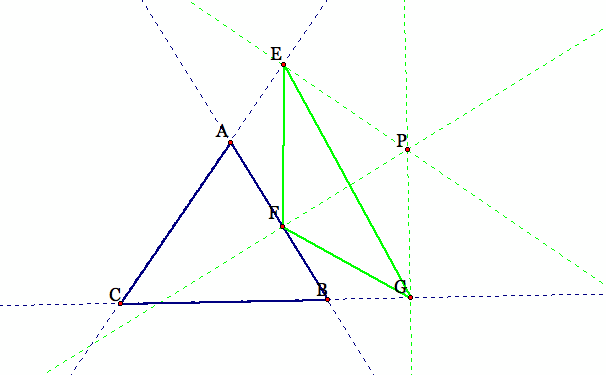
Using GSP, we can investigate several interesting properties surrounding the Pedal Triangle of Triangle ABC.
First, let us construct the Pedal Triangle of the Pedal Triangle (i.e. construct the Pedal Triangle of Triangle EFG), we will can it triangle HIJ. Construct the Pedal Triangle of triangle HIJ, call it triangle KLM. Notice, triangle KLM, the pedal triangle of the pedal triangle of the pedal triangle, seems to be similar to the original triangle, triangle ABC. You can explore this idea with GSP and try to develop a proof of why this idea works.
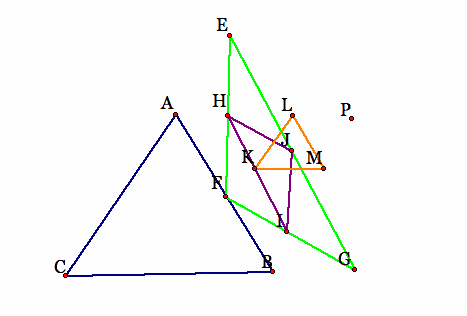
Another exploration with Pedal Triangles is to notice the times when the vertices of the Pedal Triangle are collinear, thus forming what we call a degenerate triangle. It is easy to see this happens when the Pedal Point, P, is located at one of the vertices of the original triangle, ABC. See below:
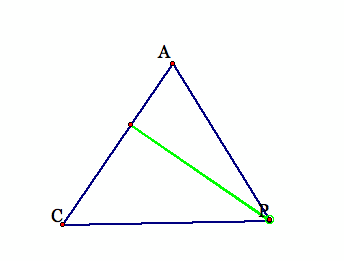
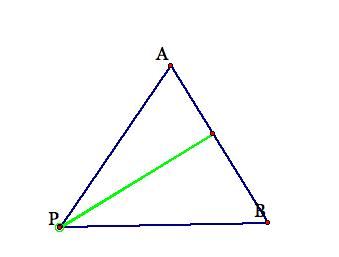
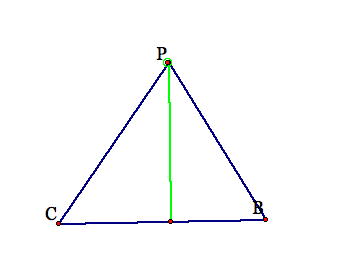
Let us propose a conjecture: If the pedal triangle becomes degenerate when the pedal point is located on one of the original triangle's vertices, then will it always be degenerate when the pedal point is a point on the circumcircle of triangle ABC since the circumcircle passes through all three vertices of triangle ABC. Using GSP, we can construct the circumcircle of triangle ABC and merge the pedal point with the circumcircle. When the pedal triangle "collapses" and becomes a degenerate triangle as all of the vertices are collinear, we call this special case the Simpson Line.
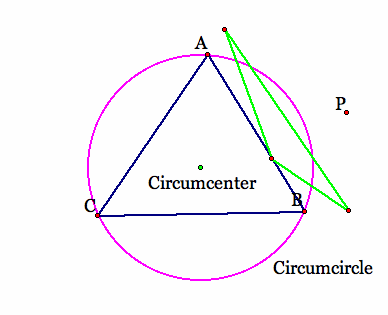
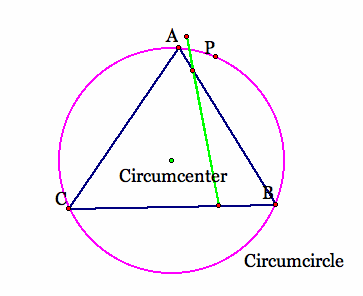
Using GSP you can explore the fact that whenever P is on the circumcircle the Pedal Triangle is a degenerate triangle forming the Simpson Line. We can explore the collection of Simpson Lines by tracing the Simpson Line as we annimate the Pedal Point to travel around the circumcircle. Look at what happens!! The shape that begins to appear is called the Deltoid Curve.
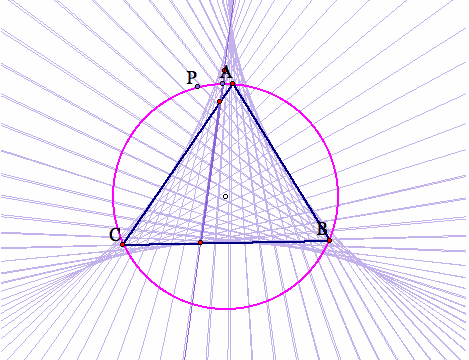
While it seems that the pedal triangle is degenerate if it lies on the circumcircle of triangle ABC, we have not proven that it is true. Let us try to move beyond out claim, and try to prove this statement: The vertices of the pedal triangle are collinear iff the point lies on the circumcircle.
PROOF:
Given triangle ABC with point P on the circumcircle of triangle ABC, we need to show that the "feet" of the perpendicular lines drawn from P to the sides AB, BC, CA (or their extensions) are collinear.
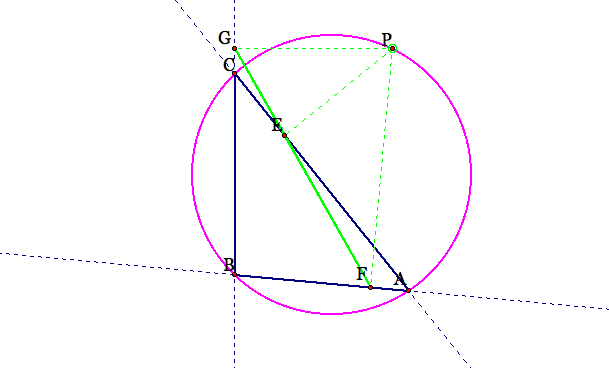
By construction, we know that PF is perpendicular to BF and PG is perpendicular to BG. Therefore, the point P lies of the circumcircle of triangle BGF.
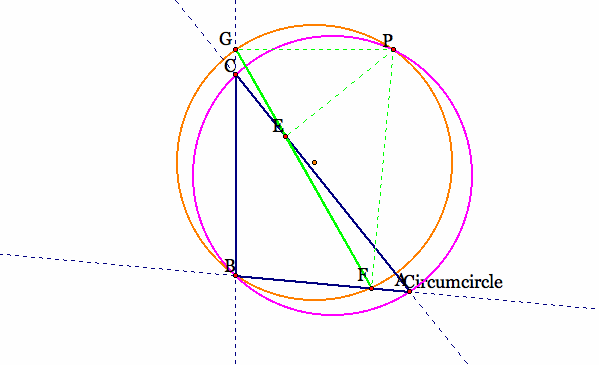
Using similar arguements, we can say that P lies on the circumcirlce of triangle AFE and triangle CGE. See below:
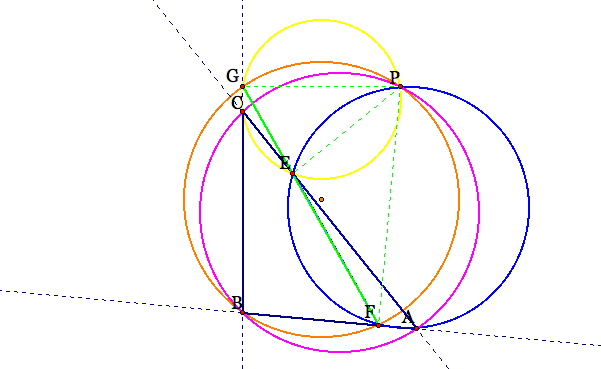
Knowing that P is a point on the circumcenters of the previously identified triangles, we can say that PGBF, PGCE, and PEFA are cyclic quadilaterals. Knowing that opposite angles of cyclic quadrilaterals sum to 180 degrees, we can say the following:
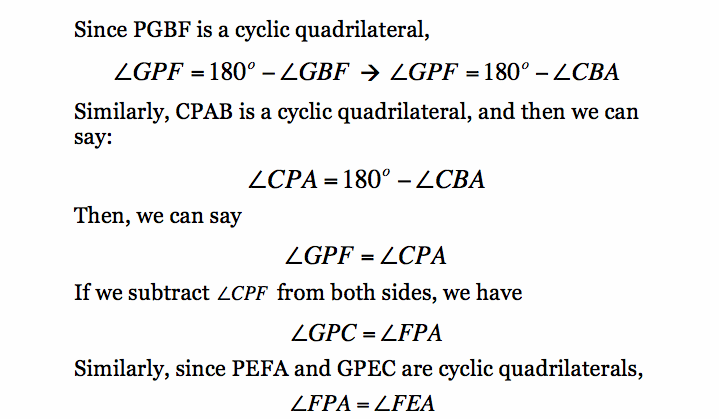

Therefore, the vertices of the Pedal Triangle are collinear when P is a point on the circumcircle of the orginal triangle. QED
ONE LAST THING: One more interesting thing about pedal triangles: Construct the midpoints of the sides of the pedal triangle. If we trace these three midpoints and move the pedal point about triangle ABC's circumcircle, we seem to see ellipses forming that look like they are intertwined. Pretty cool!
